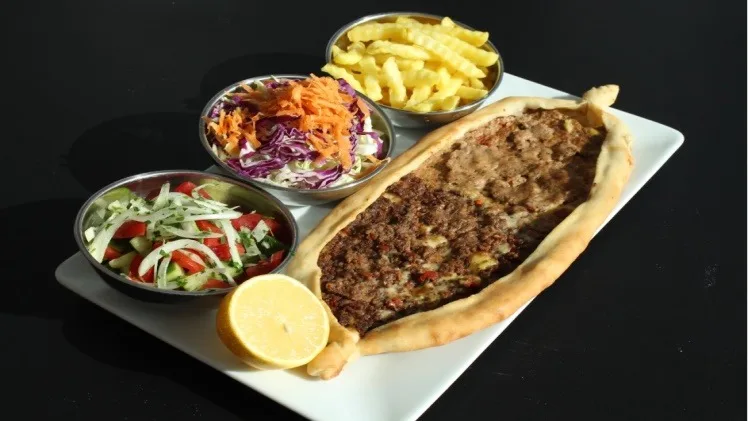Turkish pide is a delicious and satisfying dish that has gained international recognition for its unique flavors and versatility. In this ultimate guide, we will delve into the history of Turkish pide, explore its pronunciation, discuss its nutritional value, and highlight the potential health benefits it offers.
A Brief History of Turkish Pide
Turkish pide has a rich history that dates back centuries. It is believed to have originated during the Ottoman Empire in the region of Anatolia, which is now modern-day Turkey. Pide was initially baked in traditional stone ovens, resulting in its distinctive flavor and texture. Over time, it gained popularity and became an integral part of Turkish cuisine.
Pronunciation: How to Say Pide
The word “pide” is pronounced as “pee-deh” in Turkish. The “i” is pronounced like the “ee” in “see,” while the “e” at the end of the word sounds like the “e” in “bet.”
Nutritional Value of Turkish Pide
Turkish pide is primarily made from flour, yeast, water, and salt. The toppings and fillings can vary, but the core ingredients provide essential nutrients. Here is a breakdown of the nutritional value of Turkish pide:
- Carbohydrates: Pide is a significant source of carbohydrates due to its flour-based dough. Carbohydrates are the body’s primary energy source and play a crucial role in maintaining vitality and fueling physical activity.
- Protein: If pide is topped with meat or cheese, it can provide a decent amount of protein. Protein is essential for tissue repair, muscle growth, and overall health.
- Fiber: While pide does not contain a significant amount of fiber, using whole wheat flour in the dough can increase its fiber content. Fiber aids in digestion, promotes satiety, and helps maintain a healthy weight.
- Vitamins and Minerals: Turkish pide contains small amounts of vitamins and minerals, depending on the toppings used. For example, vegetables like tomatoes and onions can contribute to the vitamin C and potassium content.
Health Benefits of Turkish Pide
While Turkish pide is undoubtedly a delicious treat, it also offers potential health benefits when consumed as part of a balanced diet:
- Energy Boost: Thanks to its carbohydrate content, Turkish pide can provide a quick and substantial energy boost, making it a suitable choice for individuals engaging in physical activities or needing a satisfying meal.
- Nutrient Diversity: Depending on the toppings, Turkish pide can be a source of various nutrients, including protein, vitamins, and minerals. Incorporating a variety of toppings such as vegetables, lean meats, or cheese can enhance its nutritional profile.
- Portion Control: Pide can be a satisfying meal option that allows for portion control. With its boat-like shape and filling toppings, it can be divided into slices, making it easier to regulate serving sizes.
- Cultural Experience: Exploring diverse cuisines and traditional dishes like Turkish pide can offer a sense of cultural connection and broaden culinary horizons.
It is important to note that while Turkish pide can be enjoyed as part of a balanced diet, portion sizes and toppings should be considered to maintain a healthy eating pattern.
Turkish pide is a delectable dish with a fascinating history and significant cultural importance. By understanding its origins, pronunciation, nutritional value, and potential health benefits, you can appreciate and savor this traditional Turkish delicacy. Whether you enjoy it at a local restaurant or try your hand at making it at home, Turkish pide is sure to satisfy your taste buds and leave you craving for more.



